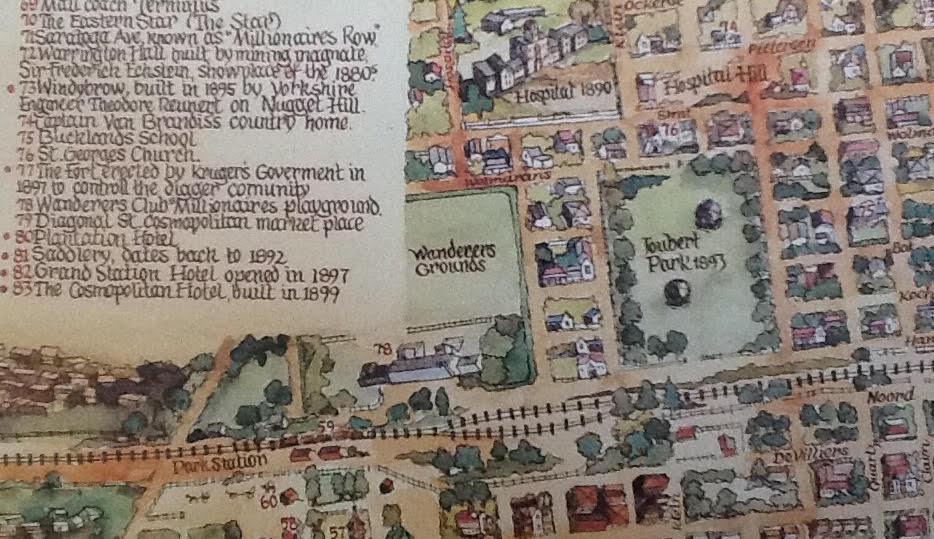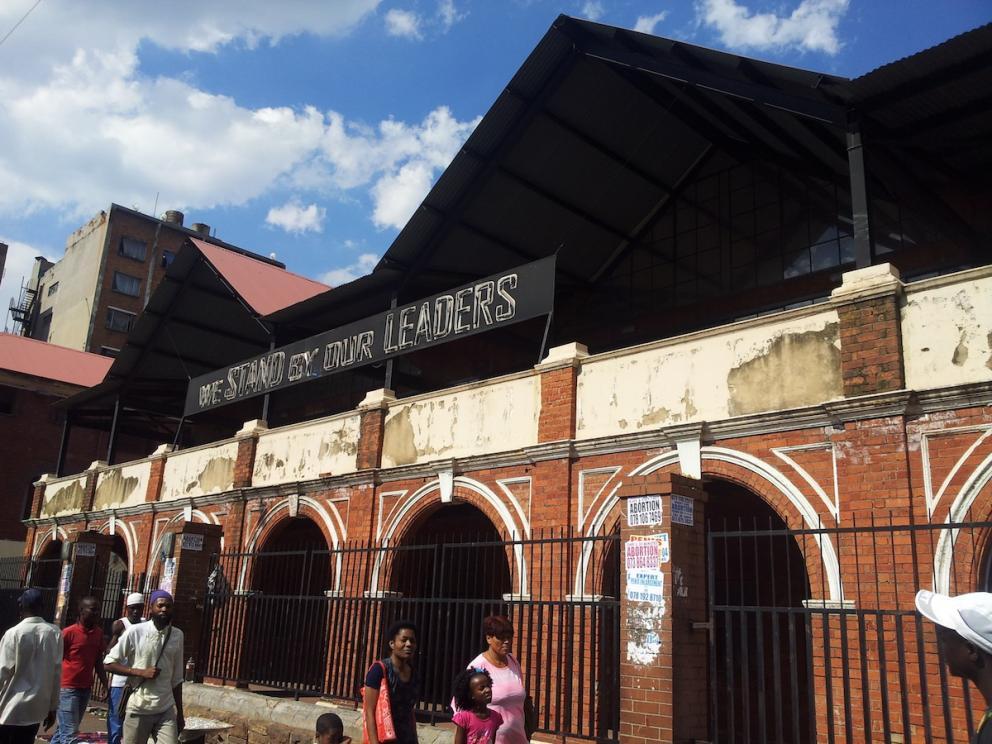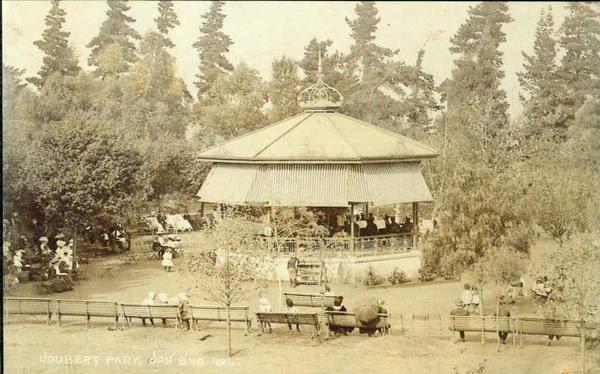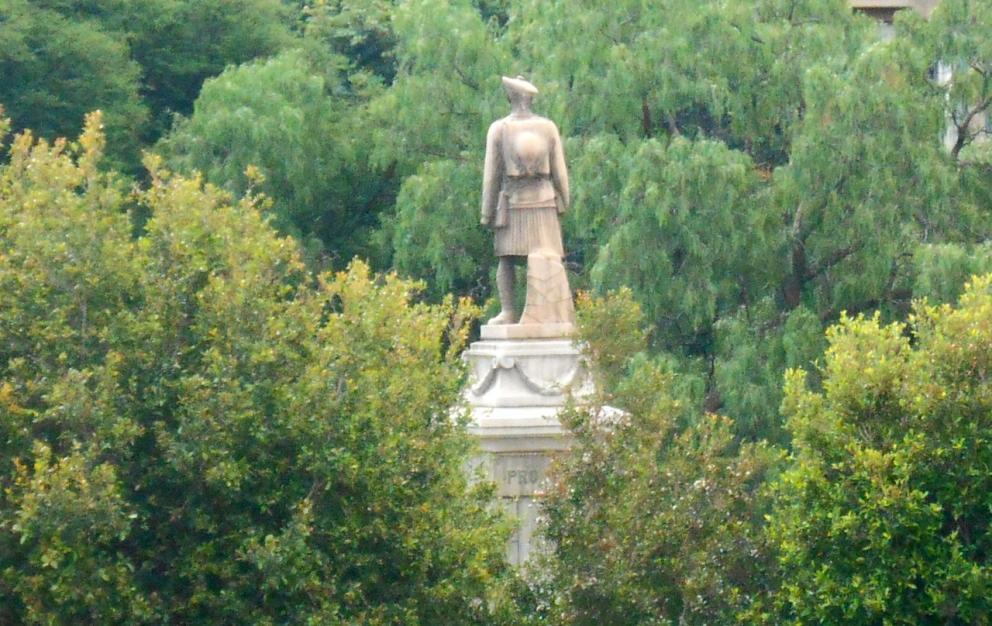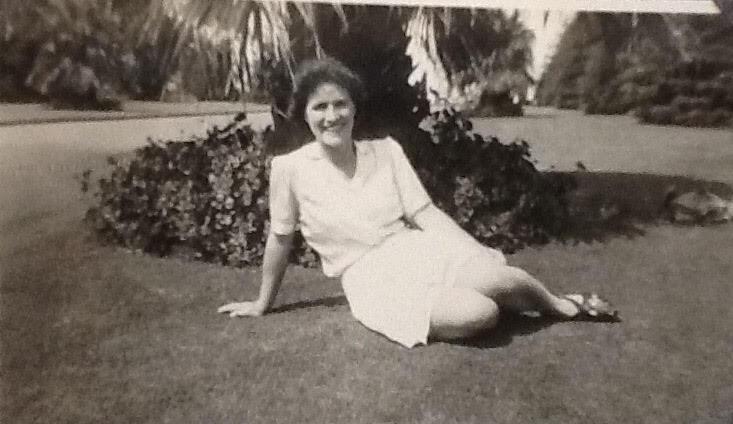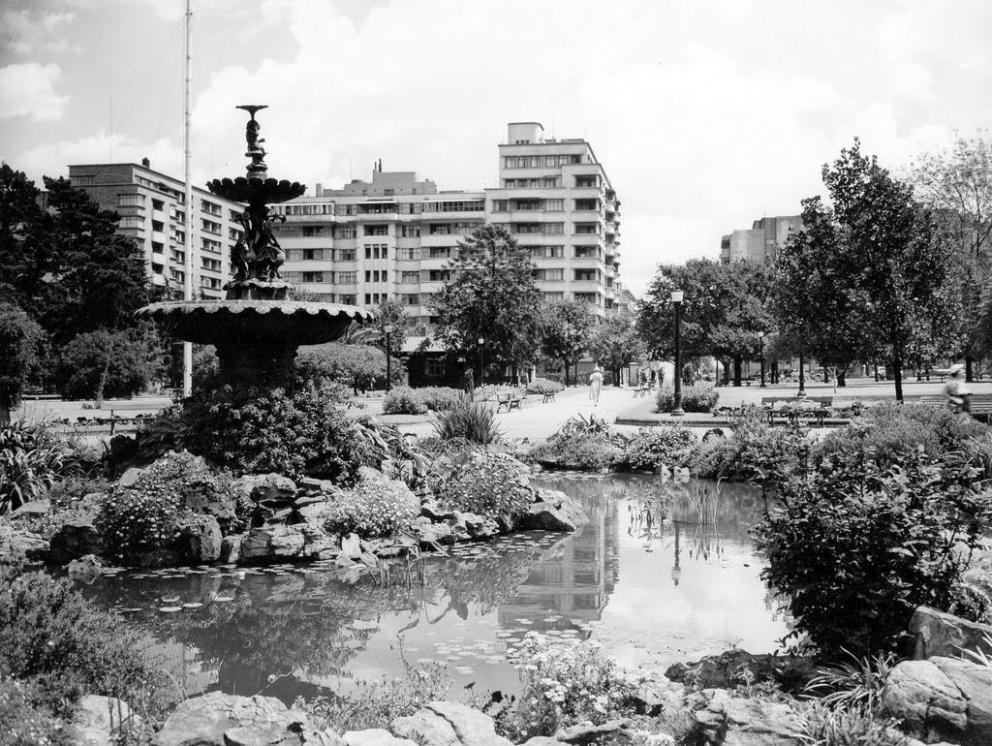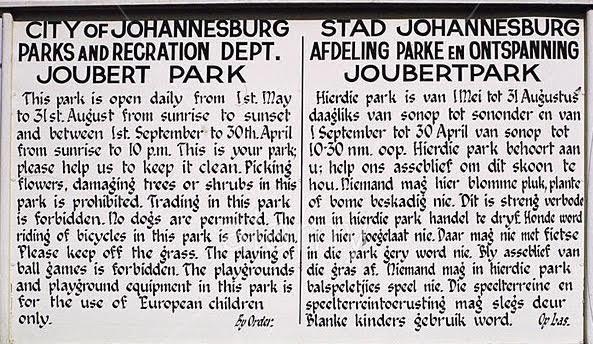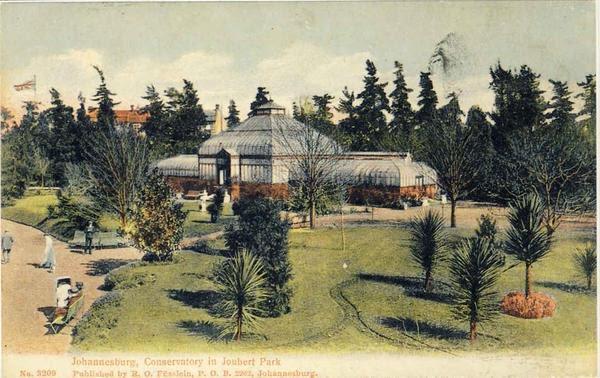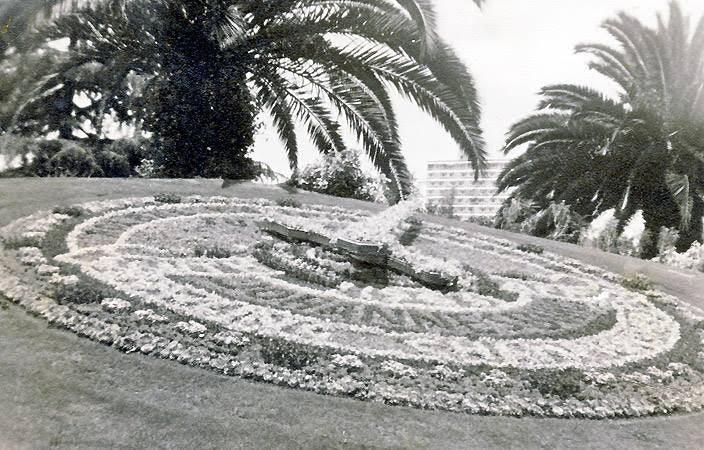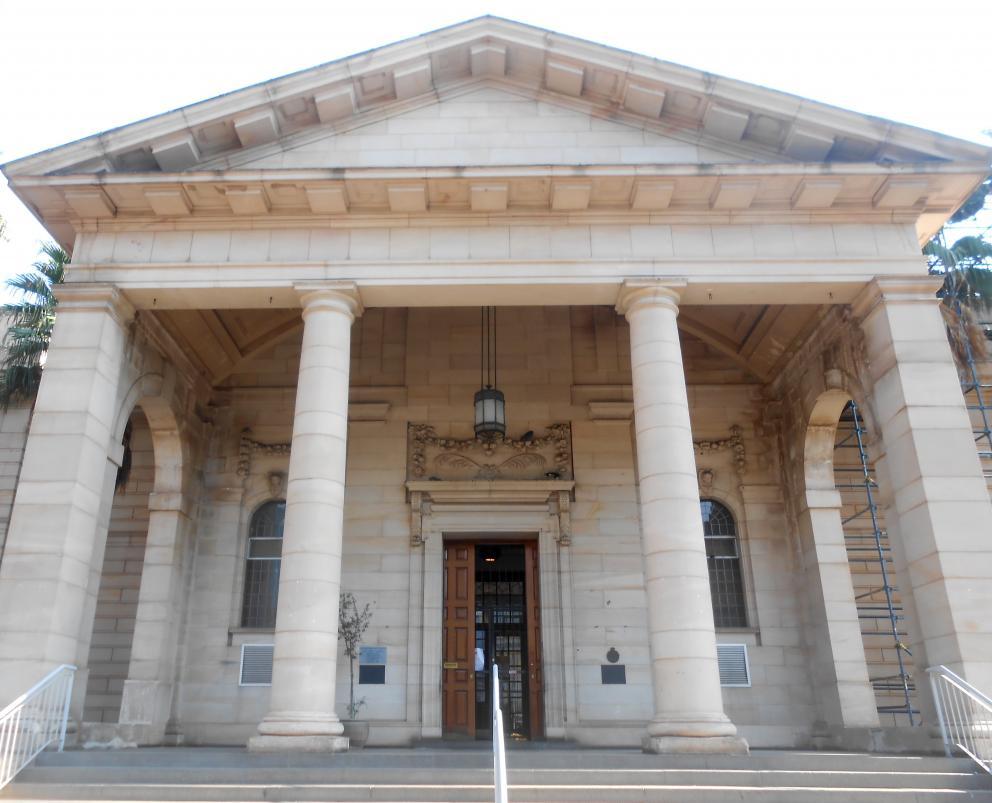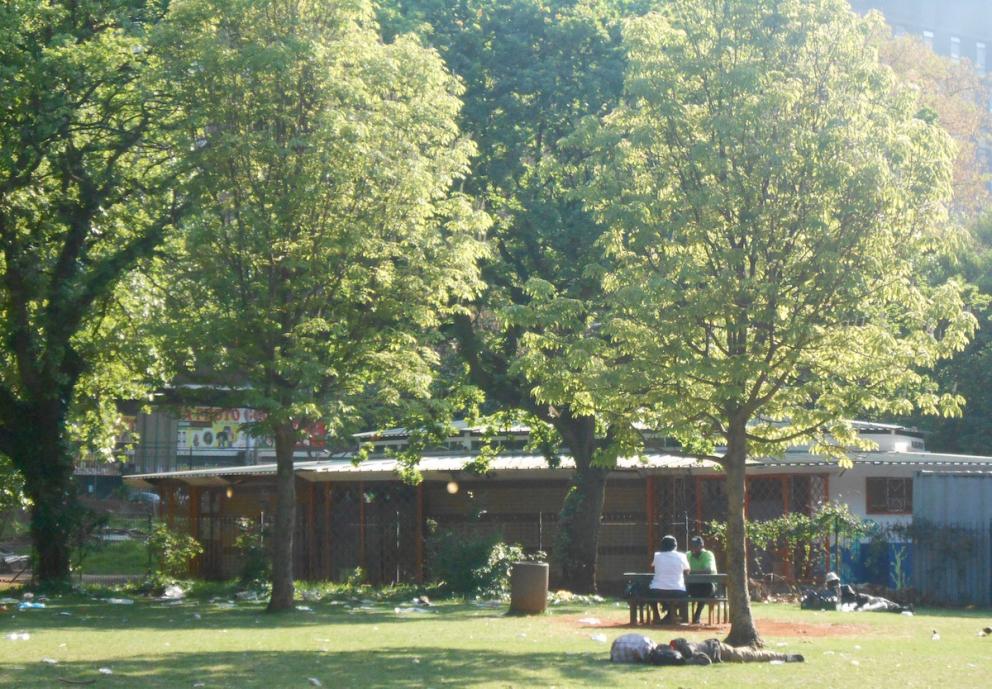
Disclaimer: Any views expressed by individuals and organisations are their own and do not in any way represent the views of The Heritage Portal. If you find any mistakes or historical inaccuracies, please contact the editor.
News emerged last week that the Johannesburg Development Agency (JDA) is considering using Joubert Park as a temporary taxi facility while upgrades to the Jack Mincer rank are made. This has outraged many Johannesburg citizens and organisations. In the article below Kathy Munro explores the history and significance of Johannesburg's oldest park. If you would like to see Joubert Park remain as it is feel free to sign this petition. For background and updates on the issue click here.
Joubert Park is and always has been a city park for the people. Historically it is a much admired public space which has transitioned through the political, economic and demographic changes of the city. Its history is part of the fabric of the City of Johannesburg and our city fathers ought to be protecting and defending that park with energy, dedication and passion because it is a place of relaxation and a place to smell the roses in the inner city environment.
Parks are precious green spaces. In the case of Johannesburg, too many of our open spaces have been lost to a railway station here or a car park there and now the most treasured of Johannesburg parks is threatened with conversion to taxi rank, albeit temporarily. Once the taxis are inside the gates why will they ever move on.
A colourful map by Gloria Hodge, dating from the 1986 Johannesburg centenary shows the city as it developed between 1886 and 1900. Joubert Park was already in existence as was the Wanderers Club and sports grounds. These were open space areas in conversation with one another. In a town where street blocks were short, both were unusual in their expanse, filling the equivalent of about eight to twelve street blocks, the Wanderers was somewhat larger than Joubert Park. The Wanderers club was expropriated by national government for railway and train station expansion in 1946, though not without a legal fight. Joubert Park is bounded by King George St, Wolmarans and Twist streets, with the Johannesburg Art Gallery and the railway cutting to the south.
Pictorial Map by Gloria Hodge showing Joubert Park
Another nearby open space was the Union grounds (bounded by Noord, Plein, Klein and Twist Streets), which had been a market square in 1890 but by 1893 had become Cosmopolitan Park and by 1897 was designated the Union Football Ground and though by 1898 it was proposed that this open space should become De Villiers Park or Plein, the name Union Ground stuck. After 1900 the Union Ground was mainly used for military purposes and the Witwatersrand Command Headquarters of the National Defence Force was established here, noting the close proximity to the Drill Hall in Plein Street (Musiker Dictionary, p 271). Later the underground parking garage was built and named for Jack Mincer. Mincer, former mayor, presented the city with a grand fountain for the Union ground. It is this parking garage that is lined up for redevelopment for taxi use. (Sources Anna Smith, p 546-7 and John Shorten p 394 )
The Drill Hall (The Heritage Portal)
Anna Smith records that it was as early as 1887 that the Diggers Committee, (the earliest form of local government) asked the Government for a "public park or garden to be planted with trees" and the park, titled Joubert Plein, described as some swampy ground of 6.5 hectares, was marked on a stand map of Johannesburg dating from 1889. The park was demarcated for the recreation and entertainment of the public of the town. On the Tomkins plan of 1890 the space appeared as Joubert Park. In the early years sports groups vied with botanical enthusiasts to claim a use for this land (Van Rensburg, 1986) and it was in 1892 that the decision was taken by the Sanitary Board to create a proper park.
Five guineas was offered as a prize for the best layout and the winning design was submitted by G S Andrews (later Town Engineer) who laid out the park according to his own design. The ground was first ploughed in October 1892 and the Park was fenced. Gifts of seeds and plants were sent by well wishers from everywhere. In 1893 a plague of locusts destroyed the newly established plants but it was a short lived disaster (Van Rensburg, p 177). In 1895 Johannesburg's population was an estimated 102 000 people (Beavon) and the park was thought to be an essential feature of the emerging and growing colonial town. By 1895 an ornamental fountain had been installed in Joubert Park and by 1898 a conservatory had been purchased from the Wanderers Club for the growing of palms. By 1899 the Standard and Diggers' News reported on the completion of the new greenhouse and called it "A Lung in the City”. However it was not until 1906 in the post Boer War period that there was a crown grant of land to the City and this was firmly entrenched at Joubert Park. Erasmus gives the expansion and location of the Park as Lot no 8, "gelee op Randjeslaagte No .138 in die distrik Witwatersrand, en 8 more 253 v.k. roede groot is ". (Erasmus p 47 ).
Joubert Park has remained that green Lung in the city ever since, enjoyed by generations of Johannesburg inner city residents. Regardless of the demographic changes people of all ages have continued to enjoy this spacious, gracious well laid out park. What defines Joubert Park? What makes it special? It is a park enjoyed by people, it is a space for anyone wanting to smell fresh air and the scent of a rose.
What of the Park's history?
It was a defined park, carefully planned with flower beds, a circular ornate fountain that sprayed water in a town where water was an expensive and scarce commodity. Gold fish in the pond mesmerized the children. The park was enclosed with a fence but access was free, during designated hours. The gates were closed and locked at night, though in the summer months the Park remained open in the evening. Electric light was installed in 1914.
Fine trees took root speedily and because they were nurtured and watered they grew… Conifers, oaks, planes, jacarandas. The four main tree lined avenues radiated from the central fountain There were paved wide avenues for the good citizens to promenade along, ladies bedecked in large picture hats and parasol in hand, men smartly dressed in suits, bowler or boater hats. There was a park keepers lodge on the West side, on King George Road and an official custodian and gardeners were employed to maintain the shrubs, trees, lawns and flower beds. It was a well watered and cared for park. By 1898 150 seats had been installed. The wooden benches were in great demand, especially around the bandstand.
The wooden benches were in great demand, especially around the bandstand (old postcard)
The bandstand was another focal point and prime attraction for a people sitting on benches and being entertained. Bands played on a Sunday afternoon in summer months. Often visiting orchestras performed. It was free entertainment and it attracted the crowds. In the 1960s a popular tent like theatre was erected in the park. I remember watching a Punch and Judy show here and on another occasion the popular entertainer Eve Boswell.
The mayor threw a garden party once a year in Joubert Park. This was where one could play (or observe) open air chess with giant chessmen and indeed open air chess is still played today. There is a continuity and universality about the game. The Transvaal Scottish War memorial, was located outside the Park Gates on an Island in King George Street (today this war memorial stands outside the View on St Andrews Road).
The Transvaal Scottish War Memorial
Each Johannesburg generation remembers the Joubert Park of their childhood. I remember Joubert Park as a child of the fifties, when my mother took us on a visit to the Art Gallery, the Hothouse or the play ground. It was a magical time of sunlit childhood treats, sticky pink candy floss or ice cream. Who can forget the thrill of a whirl on the " witches' hat" in the play ground.
My mother regarded the park as her special place (Kathy Munro)
My mother who came to Johannesburg when she was a young independent bachelor woman in the 1930s regarded the park as her special place, as she walked through the park daily to JW Jaggers where she worked. She lived in a small apartment block in Bok Street and the park was a place of sunshine and escape from flat living. At the weekends you could chill out and meet up with boyfriends, listen to free music in public or visit the Art Gallery. She sits on the lawn in Joubert Park daringly wearing shorts. For my mother, everything that was good about Johannesburg was encapsulated in the pleasures enjoyed in Joubert Park. Joburg life was her oyster.
A 1950s Postcard of the Ornate Fountain
A posting on Wikipedia of some memories of one child reads: "Sixty years ago my brothers and I played in Joubert Park. I remember there was a fish pond in the middle. Nearby was a band stand where a military band played every Sunday. Pensioners were sitting on the benches enjoying the sun. There were also many pigeons that were fed by the visitors.....During the Sixties and Seventies, the park manager was a Mr. Gunn, who lived in a house within the grounds. He was responsible for the upkeep of the park. He was supported by a number of park-keepers, known affectionately as "Parkies". Every evening, at 6pm, a bell was rung to mark the closing of the park (except over the holiday, when the park remained open until 10pm)"
In 1936 Vancouver, also founded in 1886, presented Johannesburg with a 110-foot flagstaff made from a Canadian Douglas Pine which was positioned in Joubert Park (Shorten , p 369).
The park has always been a managed public space. The rules which were enforced quite strictly were controlling... No dogs, no lounging about on the grass, no picking of flowers, no cycling, no ball games. During the apartheid era of racial segregation, most hurtful, only European children were allowed to use the play equipment or sit on the benches or drink from a water fountain. Such discrimination is an indelible blot on the City's history.
Such discrimination is a blot on the City's History
In 1898 the town engineer's report announced that a conservatory had been purchased from the Wanderers Club to be used for growing palms etc. The glass house or Hothouse as we called it stood on the north west corner and when I was a child its hot humid atmosphere enveloped a paradise of colour of cyclamens, ferns, lilies, begonias and orchids. Forget Kew gardens we had it all in Johannesburg! The glass house had a dome like central roof with two side wings. It was a favourite treat to spend time in that warm conservatory. The park had its own nursery for cultivating seedlings. Joubert Park with its own plant nursery in one corner was Johannesburg's botanical garden.
The glass house or Hothouse as we called it stood on the north west corner (Old Postcard)
I also remember the floral clock, which was set in a raised mound. It thrilled and astounded me that this clock actually told the time. Below is a Facebook sourced photo taken by Bruce Kilgour in 1961 using a Brownie Box camera. The pansies made a superbly colourful display.
Floral Clock - Bruce Kilgour - 1961
The Park was named in honour of P J Joubert, the Commandant General of the South African Republic, (1889 ) though the name pre dates the Anglo-Boer War. The origins are rooted in the Victorian period but the Park came into its own in the Edwardian years and it remained a park held in affectionate embrace by Johannesburg citizens. I recall to, the very popular Christmas display of lights and fairy like and Disney fantasy world displays, when children at dusk excitedly frolicked. It was a gift to the people from the Johannesburg City Council. It was an annual pleasure that I enjoyed in the fifties and my children enjoyed these sparkling Christmas lights in the 1980s. Artists in the Sun also exhibited in Joubert Park.
Lucille Davie in her book on Johannesburg's Parks, Cemeteries and Zoo, writes about the Earthlife Africa (launched in 1993) Greenhouse project, located in the old nursery, its objective is to make Johannesburg a green city, this centre supports an agricultural cooperative, the production of organic fertilizer among other plans for farming in the city. Another non profit organization is the Lapeng Child and Family Resource Centre and a health and wellness centre.
The Johannesburg Art Gallery is also located in Joubert Park, designed by the architect Edwin Lutyens in 1911 and opened in 1915. Lutyens was also the architect of the Rand Regiments Memorial in Saxonwold that dates from the same period. It is a classical Edwardian porticoed building facing south and overlooking the railway cutting. Lutyens (the choice of architect was Florence Phillips’) was assisted by the local architect Robert Howden. We today are critical of the Lutyens design and southward orientation of the Gallery, but Lutyens drew a plan for the gallery located within a redesigned and extended Joubert Park. It was his intention to cover the railway line and to link Joubert Park with the Union ground. His plan (included in the Bruwer study) shows the layout for a 20 acre park in formal geometrical pattern and he anticipated the closure of Noord Street. There would have been a much broader forecourt effectively showing off the southern elevation of the Gallery and direct access to the Union grounds.
Main facade of the Johannesburg Art Gallery (The Heritage Portal)
The Gallery was purpose built to house the civic art collection assembled by Hugh Lane as directed by Lady Florence Phillips, wife of the mining magnate, Sir Lionel Phillips. The budget was tight at £20 000 and while built in stone (Lutyens wanted brick) the building was curtailed. Lutyens envisaged a Joubert / Union Ground new park on a grand scale but also with intimate elements relating to major, minor and converging axes. (see Bruwer Study for details).
In 1940 east and West wings to the Gallery were added and in 1986 there were further additions with an attempt made to relate to the Park on the north side. In many ways the Gallery has always been at a disadvantage as its location and orientation, did little to enhance the grandeur of the building. Despite the Lutyens design, and the fact that his entire plan was not executed, means that the Gallery does not stand favourable comparison with other colonial capital galleries such as Sydney. In the 1960s Sam Cohen of OK Bazaar fame proposed purchasing the Gallery and converting it into a fine specialist eye hospital. Fortunately or perhaps unfortunately that did not happen.
Today Joubert Park still serves Johannesburg's populace. City Parks on its website tells us that some 20 000 people use this public space each month. It has not been privatized and is in a new dispensation of freedom open all residents. It is still place where citizens can take their ease and enjoy the sunshine. The fountain may not work, the old rules about sitting on the grass no longer apply, the bandstand may not reverberate with music to march by but there are more people than ever enjoying this green African oasis, and they are all people who live in the surrounding crowded apartment blocks. For them this green city lung is needed more than ever. There are the regular chess players, the photographers, the hawkers and the mothers with children. There are more homeless people and drug addicts. This is the inner city at ease, not in a park as a fantasy idyll but at the edge of hope and daily life. These days, though white people predominate in the line up of visitors to the Johannesburg art Gallery, you won't see too many white faces among the park throng. A glimpse at the past gives a hint at what might be possible in the future but the insertion of a taxi rank would be the death knelł for Johannesburg 's oldest premier park.
Some selected References
- Anna Smith : Johannesburg Street Names (1970)
- Lucille Davie : A Journey through Johannesburg's Parks, Cemeteries and Zoo
- Holmden's Johannesburg, Randburg and Sandton Townships 10th Edition.
- J P L Erasmus . Die Rand en sy Goud (1944)
- John Shorten, The Johannesburg Saga (1970)
- Chris Van Rensburg publications Johannesburg One Hundred Years (1986)
- Johann Bruwer : Report on the Historic Layered development of the Johannesburg Park Station Complex and Joubert Park Precinct ( 2006 ) for G Heritage Management Framework
- Gloria Hodge: Centenary Pictorial Map of Johannesburg, ( 1986 )
- Gillian Carmen . One Hundred Years of Collecting the Johannesburg Art Gallery 2010
- Thelma Gutsche : No Ordinary Woman
Kathy Munro is an Honorary Associate Professor in the School of Architecture and Planning at the University of the Witwatersrand. She enjoyed a long career as an academic and in management at Wits University. She trained as an economic historian. She is an enthusiastic book person and has built her own somewhat eclectic book collection over 40 years. Her interests cover Africana, Johannesburg history, history, art history, travel, business and banking histories. She researches and writes on historical architecture and heritage matters and is well known for her magnificent book reviews. She is a member of the Board of the Johannesburg Heritage Foundation and is a docent at the Wits Arts Museum. She is currently working on a couple of projects on Johannesburg architects and is researching South African architects, war cemeteries and memorials.
[Originally published on 17 September 2015]
Comments will load below. If for any reason none appear click here for some troubleshooting tips. If you would like to post a comment and need instructions click here.

